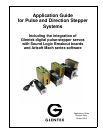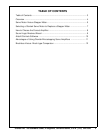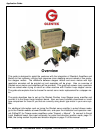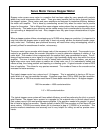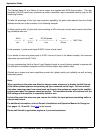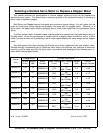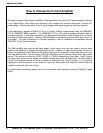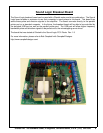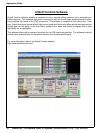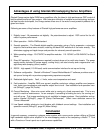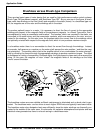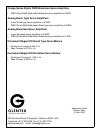
Glentek Inc. 208 Standard Street, El Segundo, California 90245, U.S.A. (310) 322-3026 5
Servo Motor Versus Stepper Motor
Stepper motor versus servo motor is a question that has been asked by many people with projects
where they could incorporate either motor. There are many benefits that the servo system has over
the stepper system. Servo motors and servo amplifiers are designed to maximize efficiency between
the motor and amplifier. This is done by commanding current only when the motor has to provide
torque for the system. This is different than some stepper motors where they are commanding current
continuously. This leads to poor efficiency as the usable energy that is commanded to the motor when
it is not moving is dissipated into heat. Also, steppers have very poor torque characteristics at higher
speeds.
When a stepper system utilizes microstepping up to 25,000 micro steps per revolution, it is important to
note that since the stepper motor is open loop, it does not usually achieve the desired location, espe-
cially under load. Particularly poor positional accuracy will result when using microstepping, which is
primarily utilized for smoothness of motion, not accuracy.
The servo motor has an encoder which keeps track of the movement of the shaft. The encoder is con-
nected to an amplifier where the encoder information is used to determine degrees of rotation of the
motor shaft. This number is then compared with the number that it was commanded to move. The dif-
ference then becomes an error signal to a high gain, high bandwidth digital servo loop within the servo
amplifier. The error is always nulled to zero in steady state conditions. For this reason, you see the
digital step servo never loses steps or position as a step motor can if it is inadvertently stalled and
misses a step, thus losing position and requiring a re-homing cycle. A typical encoder is around 2500
lines of resolution. This allows for very precise movement. The number of lines on the encoder can be
increased for better accuracy.
The typical stepper motor has a step size of 1.8 degrees. This is equivalent to having a 50 line en-
coder which is a very low resolution encoder. Encoders range from 1000 to 5000 lines per revolution.
As an example, a 1000 line encoder would have 20 times better resolution than a 1.8 degree stepper.
1000 line encoder = 4000 counts/revolution
1.8° = 200 counts/revolution
The typical stepper servo system will have added efficiency as well as performing the job in a smooth
quiet manner. The stepper servo system is a upgrade for the customer who is serious about having
their system move in the most precise manner possible. If the precision needs to be greater it is possi-
ble to install a higher line encoder. Glentek typically installs 2500 line encoders on their Nema 23 size
servo motors. A 2500 line encoder allows you to command a step of 1/10000th of a revolution. This
provide excellent smoothness and accuracy and is very helpful for milling as well as precise move-
ments.



